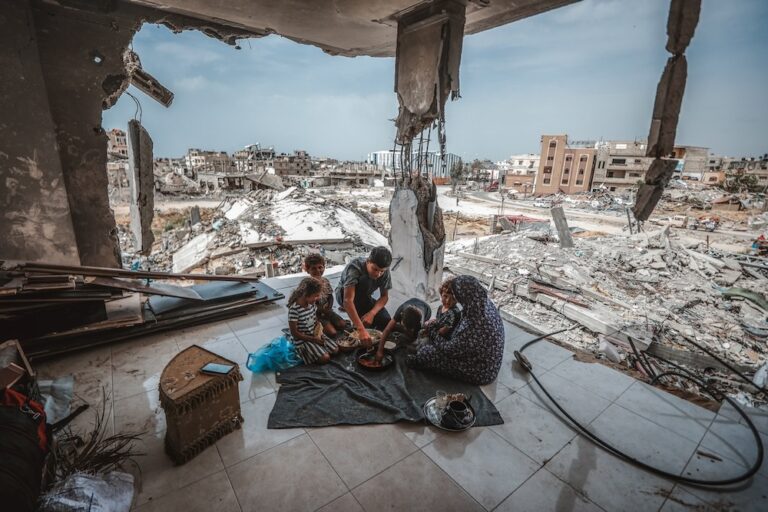(RSF/IFEX) – The following is a 28 December 1999 RSF press release: 1999 Survey Nearly twice as many journalists killed in 1999 446 journalists arrested A total of 36 journalists were killed in the course of their work or because of their opinions in 1999, 446 were arrested and 653 attacked or threatened. A total […]
(RSF/IFEX) – The following is a 28 December 1999 RSF press release:
1999 Survey
Nearly twice as many journalists killed in 1999
446 journalists arrested
A total of 36 journalists were killed in the course of their work or because of their opinions in 1999, 446 were arrested and 653 attacked or threatened. A total of 357 media were victims of bans and suspensions. On 28 December 1999, 85 journalists were in prison because they had tried to do their work of informing the public. Press freedom is inexistent in about 20 countries that are home to two billion people. In 70 or so other states, respect for press freedom is haphazard and uncertain.
The death toll for 1999 was nearly double that for 1998, when 19 died. The growing number of armed conflicts worldwide was the main reason for the increase. Twenty-eight journalists died in war zones: Sierra Leone (10), the Federal Republic of Yugoslavia (6), Colombia (6), Chechnya (3), East Timor (2) and Lebanon (1). In Sierra Leone, rebels of the Revolutionary United Front (RUF) conducted a deliberate operation to eliminate journalists close to the government from 6 to 12 January. Nine of those who died were summarily executed by the rebels, like Paul Abu Mansaray, deputy editor of the privately owned daily Standard Times. The 41-year-old journalist was praying in a church with his wife and three children when the RUF came to fetch and kill them. Nor did the rebels hesitate to murder representatives of the international media. Myles Tierney, a cameraman with the American news agency Associated Press, was killed by RUF fighters disguised as Blue Helmets. Soldiers from the West African peacekeeping force Ecomog were responsible for the other murder. They killed Abdul Juma Jalloh, news editor of the magazine African Champion, because they suspected him of being a RUF rebel. In Colombia six journalists were murdered, victims of armed organisations and paramilitary groups. They included humorist Jaime Garzon, a symbolic figure in Colombian journalism and an ardent campaigner for peace, who was shot dead by two men on a motorcycle in Bogotá on 13 August. In Kosovo, Gabriel Grüner and Volker Krämer, special correspondents of the German magazine Stern, were murdered in circumstances that are still unclear shortly after troops from the UN peacekeeping force entered the province. According to Stern’s investigations, they were killed by a group of paramilitaries fleeing to Serbia. In East Timor it was apparently the regular Indonesian army that was behind the murder of two journalists. The recent Russian offensive in Chechnya has led to the deaths of three local reporters. Journalists are still being taken as targets by extremist groups, as in Sri Lanka (3), India (1) and Turkey (1). In Nigeria three journalists were killed as they were covering clashes between ethnic groups.
85 journalists imprisoned
The number of journalists imprisoned fell slightly in 1999. A total of 85 were in jail on 28 December 1999, compared to 93 on the same date in 1998. But those figures do not necessarily reflect the full truth about repression in some countries. In the Democratic Republic of Congo, 40 journalists were arrested and held in solitary cells by the security services during 1999, but only three were still behind bars at the end of the year. Since Laurent-Désiré Kabila came to power in 1997, about 100 journalists have been imprisoned for shorter or longer periods. In Cuba 46 journalists were arrested and detained during 1999 – some of them several times – but only four were still in jail at the end of the year. The situation is similar in Turkey, where at least 19 journalists saw the inside of the country’s jails in 1999 and 87 others were arrested.
At the end of 1999, the country with the most journalists in jail was still Burma, where 13 are being held, Syria (10), China (9) and Ethiopia (9). In Burmese and Syrian prisons, journalists are subjected to degrading treatment and do not always receive vital medical treatment. Burmese journalist San San Nweh, winner of the 1999 Reporters Sans Frontières-Fondation de France prize, has been held since 1994. She is suffering from liver disease and eyesight problems. Friends and family who try to send her food and medicine are threatened by secret service agents. Syrian journalist Nizar Nayyuf, who is serving a ten-year sentence, is suffering from the after-effects of torture, such as paralysis, bleeding and skin infections. He also has cancer, for which the authorities have refused him treatment. In Turkey, a candidate for membership of the European Union, four journalists were tortured by state officials. They included Aydogan Inal of the pro-Kurdish weekly Hêvi. After undressing him, forcing him to sing the Turkish national anthem and spraying him with ice-cold water, his torturers struck him on the testicles and tried to suffocate him. Twenty-six journalists were assaulted in Turkey in 1999. Despite some positive steps taken by the authorities, including an amnesty that allowed seven journalists to be released from prison, Turkey still has a long way to go to meet European standards regarding press freedom. Journalists are still victims of ill-treatment in sub-Saharan Africa. In the Democratic Republic of Congo the security services have whipped journalists, the number of lashes being “proportional to their age and weight” – to use the torturers’ own words. In Sierra Leone many journalists have been ill-treated and even tortured by members of the RUF. They include Mustapha Sesay, a reporter with the daily Standard Times, who was accused of being a government spy. He was violently beaten by RUF members, who put out one of his eyes with machetes.
34 journalists kidnapped
The increasing number of armed conflicts worldwide also resulted in a surge in the kidnapping of journalists: 34 were taken hostage in 1999. In Sierra Leone, the RUF detained 15 journalists, including Khalifu Fofanah, editor of the biweekly Pioneer, who was told he would be killed if he did not work for the rebels. In Colombia 16 journalists were kidnapped and then released by various armed groups. In Chechnya, where the kidnapping of journalists has acquired the status of an industry, three journalists are still being held by armed gangs who are demanding heavy ransoms for their release. One of them, French photographer Brice Fleutiaux, captured on 1 October, is being kept in a cellar and has probably been ill-treated. About 20 journalists have been kidnapped in the Russian Caucasus since 1997. Fighting and pressure from the authorities in some countries have forced journalists into exile. In 1999 nine Colombian journalists had to leave their country because of threats by paramilitaries, while four Cubans decided to leave the island because of continual official harassment. At least ten African journalists in countries such as Cameroon and the Democratic Republic of Congo have gone into exile fearing for their lives.
The declaration of a state of war or emergency is often a pretext for governments to restrict press freedom. In Slobodan Milosevic’s Yugoslavia, the independent media were forced to follow an editorial line supporting “patriotism” and Serbian resistance to the Nato air raid campaign. The murder of Slavko Curuvija, editor of an independent daily, who was accused of “treason” by the government, served as a warning to those who failed to comply. In Sri Lanka the army imposed strict censorship on news from conflict zones in the north of the country. Many journalists have been sentenced in the Democratic Republic of Congo for “revealing state secrets” or “attacking territorial integrity”. In Angola journalists are systematically harassed by the military when reports on areas controlled by the rebel Unita movement are published. Since the Russian army offensive in Chechnya began, the authorities have frequently taken members of the international media to task, accusing them of working as intelligence agents for western powers.
The “20 enemies of Internet”
In addition to military censorship, many countries also punish offences such as “publishing false information” and “insulting the head of state” by prison terms. In others, governments systematically prosecute journalists for libel as a way of stifling press freedom. This is the case in many African countries, but it also happens in Europe, particularly Croatia and Belarus. Governments in a great many countries still maintain control of radio and television, the media which are regarded as having the most impact on public opinion. No fewer than 75 states have a monopoly on broadcasting and 45 of them have also tried to put a brake on the communications revolution by restricting their citizens’ access to the internet. At the end of 1999, 20 countries may be considered as “enemies of the internet”, including Burma, Cuba, Tunisia and Vietnam. Their governments control one or more internet service providers, install filters blocking access to web sites regarded as unsuitable and severely punish users who try to find ways round these obstacles to the free flow of information. Two Chinese internet users, Lin Hai and Qi Yanchen, were jailed for “subversion” because they had tried to alert international public opinion to violations of human rights in their country.


